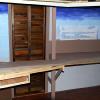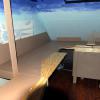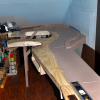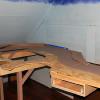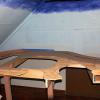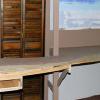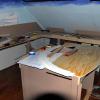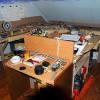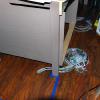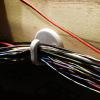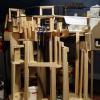Rails and Trails Imaging
Model RR - Building Benchwork
The challenge was to build strong bench work that would support a ton of plaster, have hatches to allow access to all areas of the layout, and have a minimum of legs carefully placed to not obstruct the storage and removal of large boxes under the structure. I also wanted fascia on the front edge for a more finished look, electrical wiring that did not go through holes in the trusses for easier installation and removal, and a solid plywood top on which to build successive layers. My goal was to place some electrical terminals and switch machines on the top and never underneath. Access to the underside would be limited when completed.
To play slide show, click on the 1st picture.

